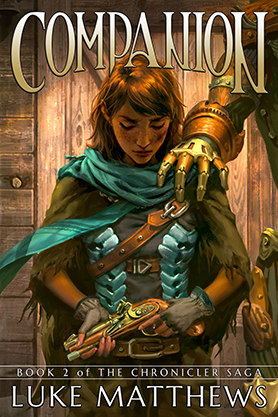
Story by Harold Sipe & Christopher Sebela
Art by Lee Leslie
After threatening to publicize a career-threatening monster-porn called Phantasmagorgya, a group of out-of-work movie monsters finds their almost-blackmailer, Invisible Izzy, stabbed to death and the movie stolen. Now, with every monster a suspect and the movie on the loose, it’s up to Carl “Wolfman” London and former Space Path engineer Travis Walters to find the killer and save what’s left of this motley group’s reputation.
Set in a world where monsters are real and make money off of their monstrosity (think Galaxy Quest meets Greg The Bunny), Screamland is intentionally referential of both monster movie and geek counter-culture. Now that the sheen of a new story has worn off, though, so has the appeal of its gimmick. The characterizations all seem to loiter at the bottom of an odd valley, never quite serious enough to be an intriguing take on the genre, and not quite over-the-top enough to be a comedic spoof.
While there are some genuinely funny moments (like a particular exchange in an elevator), there’s never enough laugh-out-loud jokes to carry the book into the next scene. On the other hand, so much time is spent on character origins and explanatory history that the murder-mystery plot is almost entirely obscured until the end of the book.
The art is fittingly cartoony, doing a fine job of deflecting some potentially adult subject matter into comedy. Like the writing, however, it’s just kind of there, never really finding a groove that sets it apart. If I were to flip through the book in a store, I’d likely just set it right back on the shelf.
Screamland is full of mildly entertaining ideas set in a mildly intriguing world with some mildly interesting characters. All that mild just lacks spice in the end, and mixes together into something ultimately bland.







